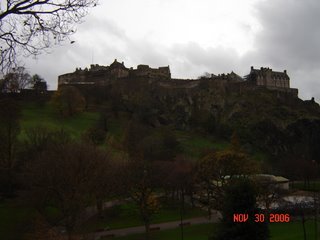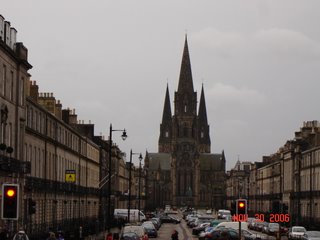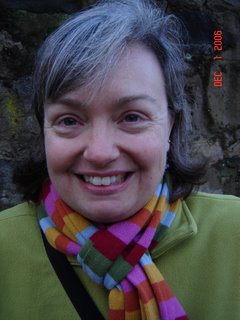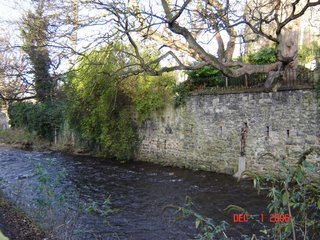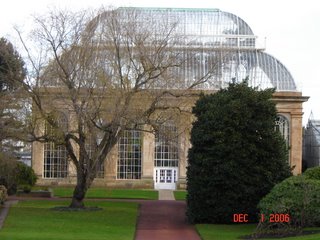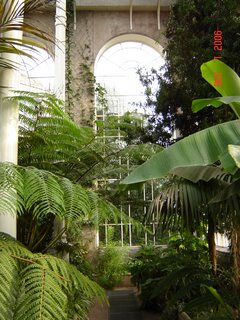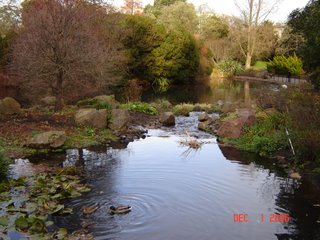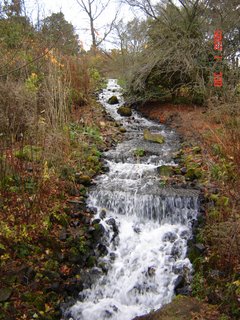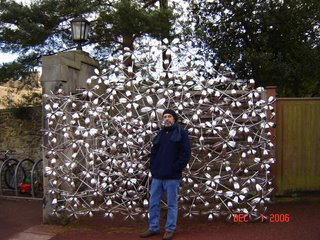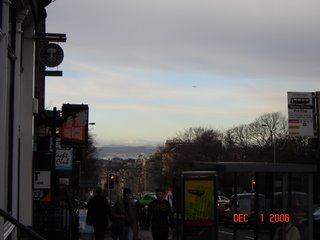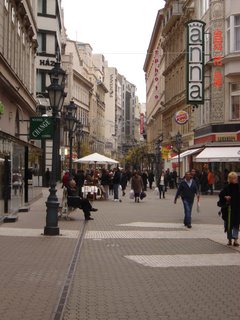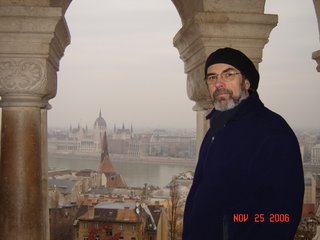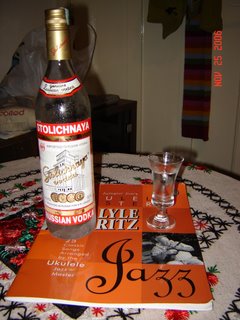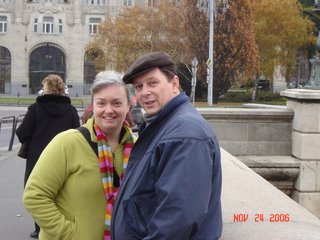Rosslyn and Kris
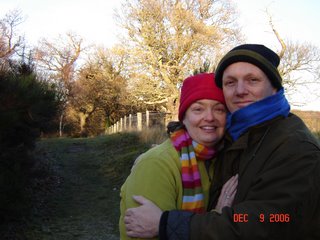 In December, my brother, Kris, came for a visit; I was really getting pretty lonely -- no family nearby, no easy phone communication, very few letters, almost no personal e-mails (starting to feel sorry for me?) and not very much blog activity. We had seen my other brother, Kurt, in Budapest at the end of November, which was really wonderful, and although we had some new good friends with us at the house, I was really happy to have a familiar face and voice around the house and exceptionally glad to be able to share this great experience with another family member.
In December, my brother, Kris, came for a visit; I was really getting pretty lonely -- no family nearby, no easy phone communication, very few letters, almost no personal e-mails (starting to feel sorry for me?) and not very much blog activity. We had seen my other brother, Kurt, in Budapest at the end of November, which was really wonderful, and although we had some new good friends with us at the house, I was really happy to have a familiar face and voice around the house and exceptionally glad to be able to share this great experience with another family member.In addition to all our favorite sights near Edinburgh (the woods at Dalkeith;
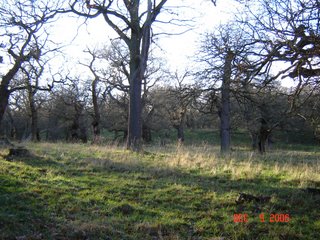

the Royal Mile and Princes Street:



Edinburgh Castle:


Susie's Diner), we also wanted to use Kris' visit as an excuse to see some sights we hadn't made it to yet: Holyrood Palace


and Rosslyn Chapel. Kris was the first person we knew who read The DaVinci Code, and his brief obsession with it became something of a family joke (we bought him a coffee mug with a picture of the Mona Lisa giving the finger). Of course, we read the book, too, and we liked it and its ideas well enough to want to see Rosslyn Chapel -- especially when we learned that it was only 3 miles from Dalkeith!
Rosslyn Chapel was famous long before Dan Brown's book (which is probably why he knew and wrote about it); in a nation of old buildings and churches and monuments, Rosslyn Chapel still stands out in Great Britain because of the fine detail of its interior decoration. It's a small private chapel, built by the St. Clair (later, Sinclair) family in 13something, which explains in part why it survived Henry VII and Oliver Cromwell.
The chapel has been surrounded by a massive, permanent-looking scaffolding since the early 1990's as restorers attempt to dry out the stonework, which had a nice bright green layer of moss and lichen on it from years and years of moisture. So, the stunning, decorative exterior can only be glimpsed in pieces -- a window, a doorway, a gargoyle.
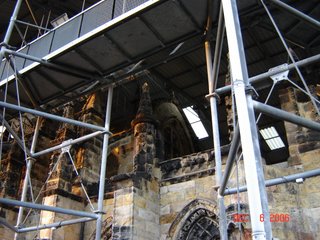


Here's a view from the outside of the chapel to the surrounding countryside; you can see why the family chose this particular hillside:

I think the most well-known feature of Rosslyn Chapel (other than Mary Magdalen's tomb in the sub-basement, of course) is the interior decoration, and that's also what fascinated me the most. The mix of Christian and pagan iconography is intriguing, and I could almost imagine a time when people could worship a god who didn't deny the supremacy of na
 ture. I was especially taken by the "green man" inside the chapel, a direct homage to pagan fertility and earth cults.
ture. I was especially taken by the "green man" inside the chapel, a direct homage to pagan fertility and earth cults.The decorations inside are really intricate, as you can sort of see in these pictures. The light is pretty dim in the chapel, so we didn't get a huge number of good pictures, but these can certainly give you a sense of it.



 Overall, we had a great visit with Kris, and we were all three duly impressed with the chapel (in spite of having to wait over 40 minutes in extreme cold for the bus back into Edinburgh). We didn't even get kicked out of Holyrood Palace when Kris and Dennis started making jokes about Queen Elizabeth in her bedroom slippers!
Overall, we had a great visit with Kris, and we were all three duly impressed with the chapel (in spite of having to wait over 40 minutes in extreme cold for the bus back into Edinburgh). We didn't even get kicked out of Holyrood Palace when Kris and Dennis started making jokes about Queen Elizabeth in her bedroom slippers!By the way, there is no basement room in Rosslyn Chapel (at least, not one open to visitors). But we did also visit the Louvre . . . .

